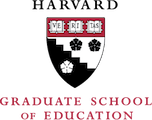Background/Context: The essay provides a comprehensive review of work by economists and others in related quantitative disciplines on the transition of students to college. A particular emphasis is given to the role of price and financial aid although issues related to college preparation, access, and persistence are also investigated. The final section discusses ongoing debates within economics about college access and success and suggests directions for future research. Purpose/Objective/Research Question/Focus of Study: While other papers review parts of this literature, given the breadth and depth of the work on the transition to college, none gives a full picture of the contribution of economics to this area of understanding. Research Design: A main goal of the economics literature has been to establish a causal relationship rather than one based on the correlation of trends or patterns. In pursuit of causality, economists rely on complex estimation techniques usually involving large samples of quantitative data and often utilize "natural experiments" to establish the impact of a factor or policy. Unfortunately, the data requirements for such work, along with the concerns about biases, often limits the kinds of questions that can be confidently answered. The primary framework in economics of education is the human capital model. When deciding whether to continue their education, individuals compare the benefits of human capital to the costs of obtaining it. Numerous articles highlight important factors in these decisions, including both monetary and non-monetary considerations as well as uncertainty and risk aversion. Conclusions/Recommendations: While great progress has been made by economists to understand issues related to college access and success, the article makes suggestions about possible future research. More work is needed to understand the role of primary and secondary schools in college attendance, why there are differences in academic course-taking and performance, and the role of expectations and information in college access. Although economists have greatly contributed to the understanding of the role of costs and benefits in college demand, additional work is needed to clarify the role of parents, teachers, peers, and neighborhoods in college decisions. Additional research is also needed to resolve the current debate about the relative role of resources in comparison to long-term family circumstances and academic preparation. Finally, more information is also need about what factors affect college success.
In this article, Bridget Terry Long and Erin Riley argue that in recent years, U.S. financial aid policy has shifted its emphasis from expanding college access for low-income students toward defraying the costs for middle- and upper-income families. They explain how loans, merit-based aid, and education tax breaks are increasingly replacing need-based aid and discuss how the declining role of grants may disproportionately disadvantage students already underrepresented in higher education. They document the rise in students' unmet financial needs over the past decade, showing that low-income students and students of color are especially likely to face substantial unmet need even after taking into account all available grants and loans, as well as family contributions. In response to these trends, the authors call for a greater emphasis on need-based aid, especially grants, to reduce the role of cost as a barrier to college access. (Contains 3 tables and 18 endnotes.)


